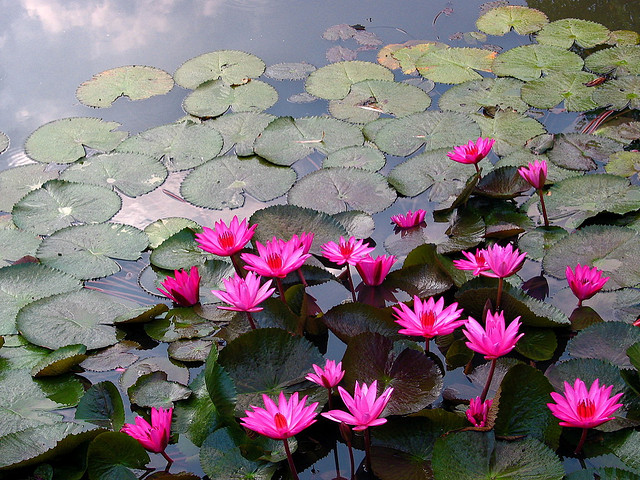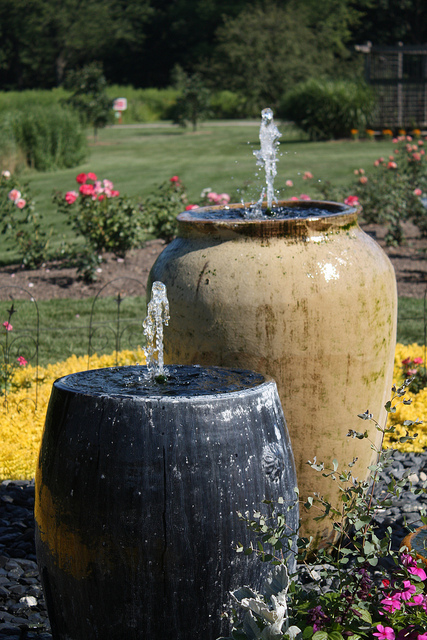Water in the landscape can create a soothing feeling, mask unwanted noise, and provide water for bees, birds, and butterflies. Water features can include still or moving water.
Types of water features include, but are not limited to, ponds, streams, birdbaths, fountains, and small containers.
Creative use of containers and other objects can provide an interesting ‘water’ accent in the landscape.


Conserving Water:
- Minimize size
- Use recycling pumps
- Cover the water surface with aquatic plants(40 to 60%) to reduce evaporation from ponds
- Place the water feature in a partly shaded area to reduce evaporation as well as provide sufficient light for aquatic vegetation (aquatic plants need at least 4 hours of sunlight per day)
- Create a dry stream bed to give the effect of water
- Research requirements for fish
- Obtain design inspiration from traditional Islamic and Zen gardens that minimize the use of water
Problems Include:
- Surface area evaporation
- Water leakage
- Materials that may crack
- Maintenance (such as algae control)
- Mosquitoes
- Expense
Additional Resources:
West
Utah: Water Features for the Garden
Midwest
Illinois: Constructing and Caring for Container Water Gardens
Iowa: Sustainable Landscape Designs and Water Features
Southeast
Florida: Provide Water to Wildlife
Florida: Water Gardens
Mississippi: Creating Water Features in the Landscape
